
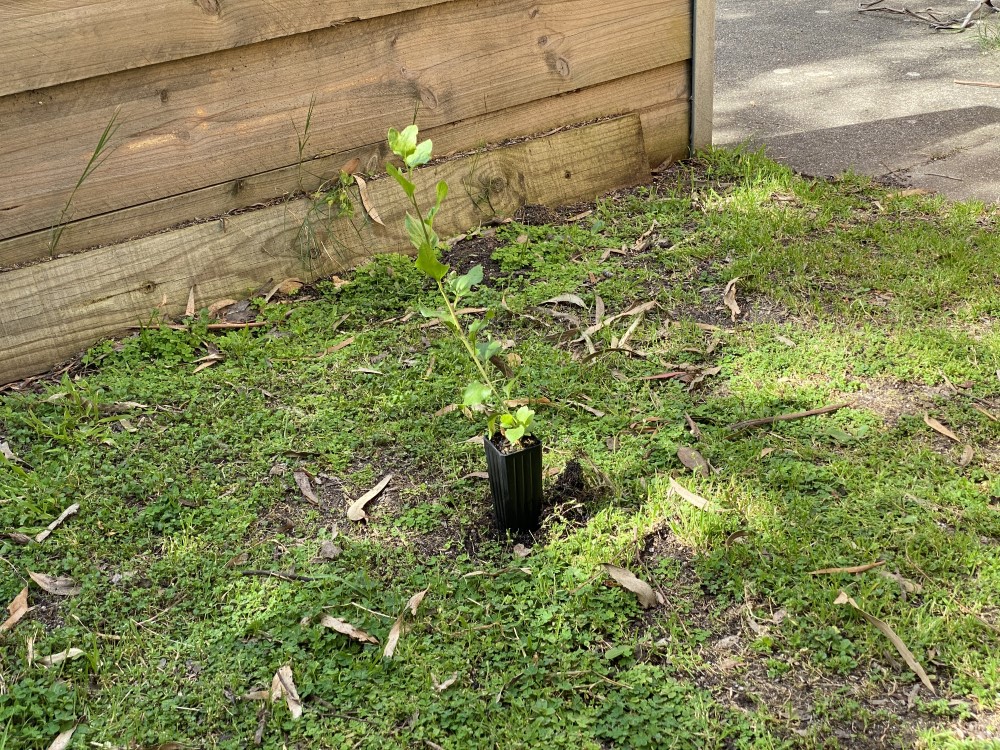
Choosing a plant and matching it with the site
If you are replanting a cleared site, restoring a degraded habitat or even putting plants in your garden, first consider the plant species that are indigenous to your area and choose one of those.
The conditions at the site are also very important when choosing a plant. Is the site in full shade, partial shade or full sun? What does the plant prefer? Will the plant be able to grow to its full potential without limiting your other plants and garden features?

Weeding, digging and preparing the hole
Planting is best done in winter when follow-up rain is more likely. Before you dig the hole, though, remove any weeds growing there.
When digging the hole, make sure it’s wider than the plant to give the roots of the young plant room to grow. It’s also best to pour some water into the hole to help soften the soil and make it easier for the plant’s roots to spread.
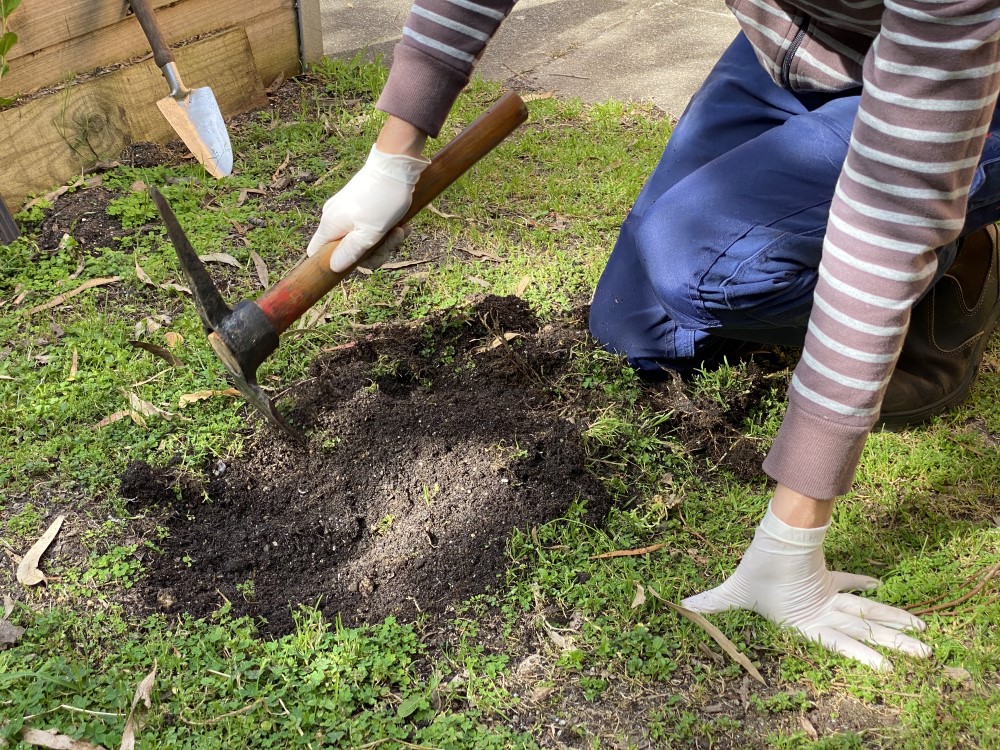
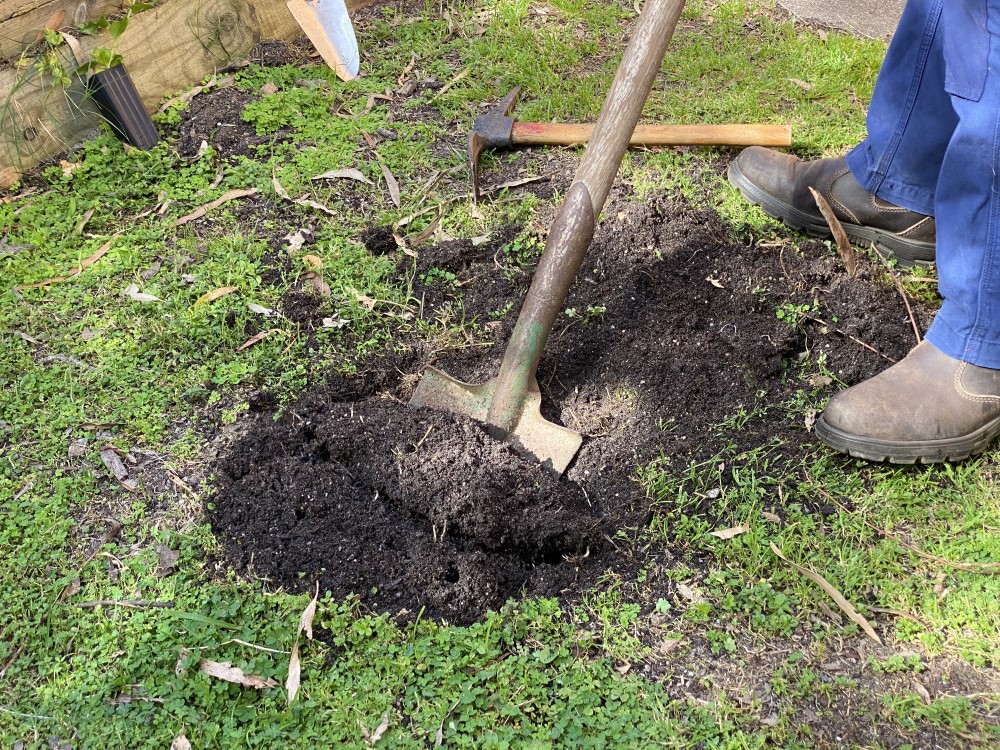
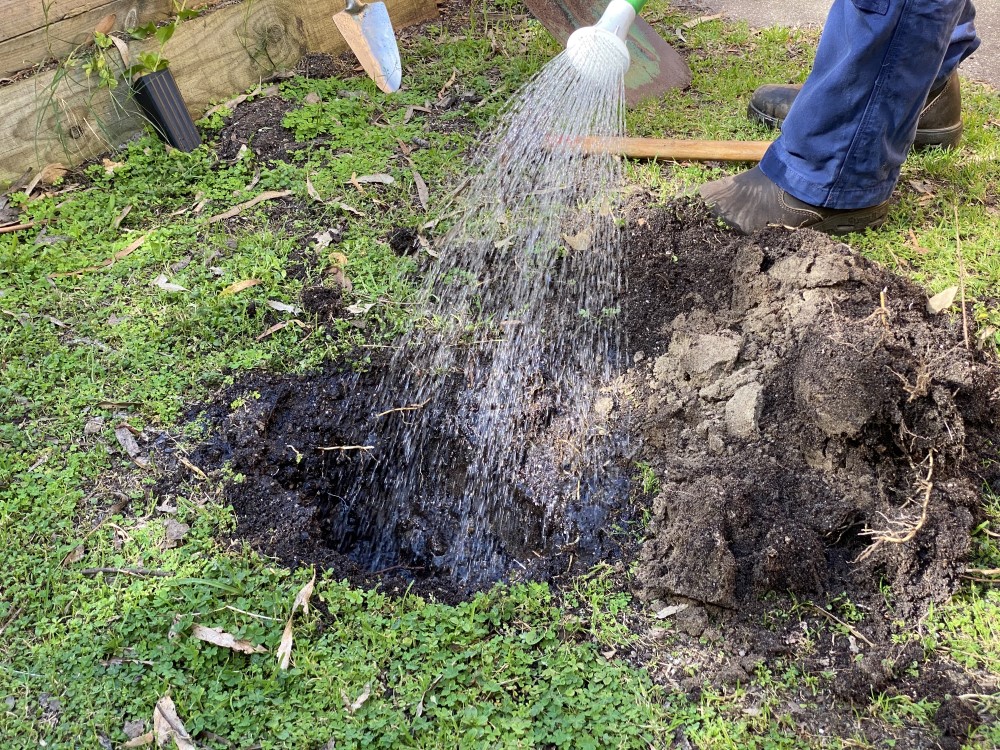

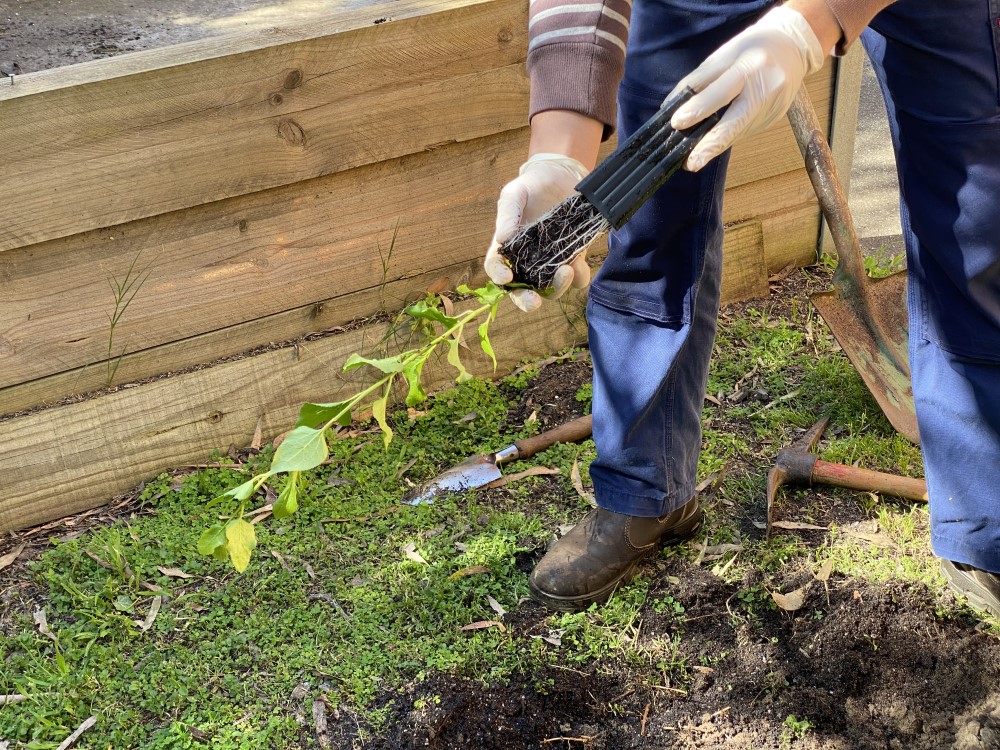
Tapping out the plant

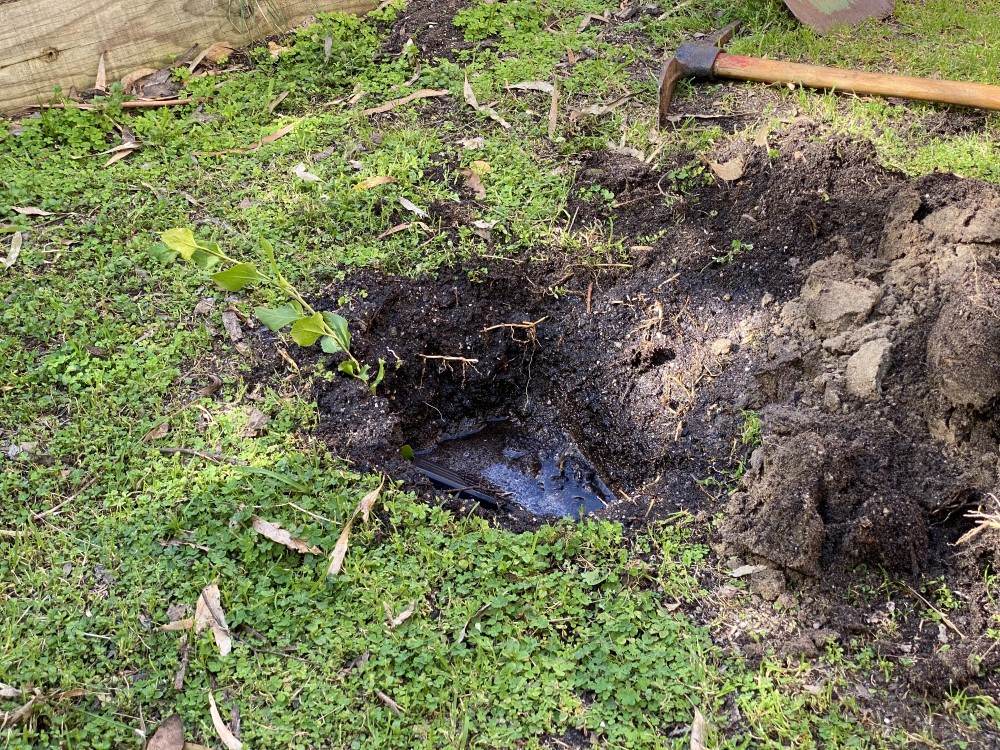
Planting
Let your tubed plant sit in the water for a short time to help moisten its roots. Don’t plant your plant too deep in the hole.
The base of the stem should be about level with the rim of the hole. Use the soil you dug up or potting mix to fill the hole around the young plant.

Watering in and mulching
Watering in the plant is one of the most important steps in your planting operation. It removes air pockets and sends moisture right down to the root zone. Before adding the water, smooth out the soil around the plant’s stem and shape it into a small well.
The water will be caught in the well and slowly work its way down into the soil around the plant. After watering in, spread some mulch around the plant to stop evaporation and keep down weeds.
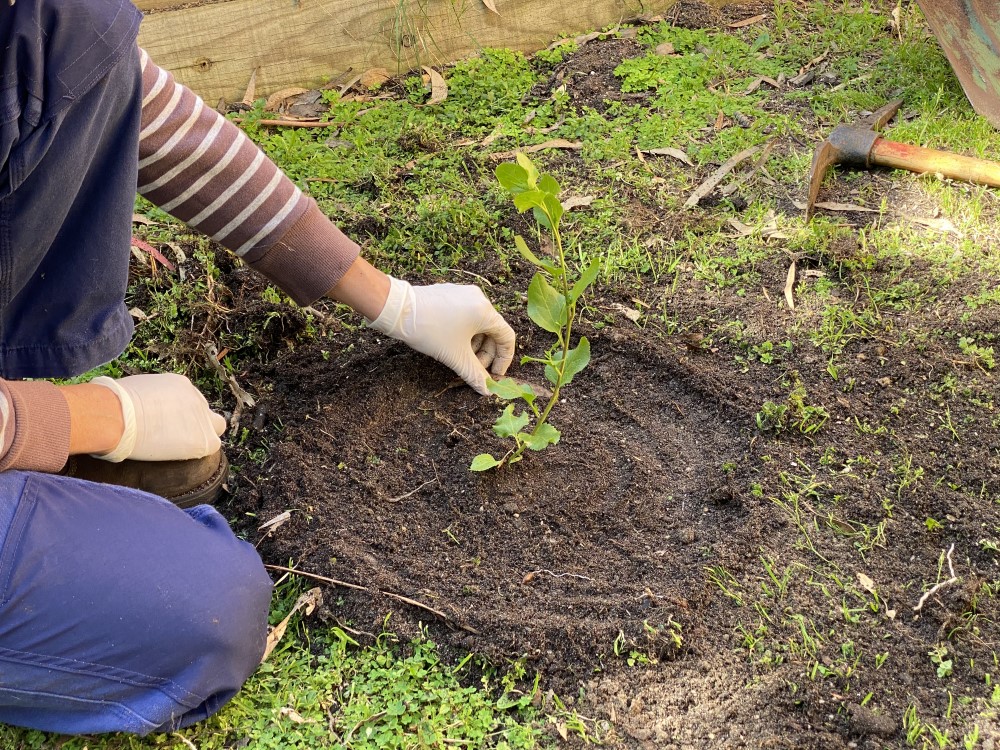
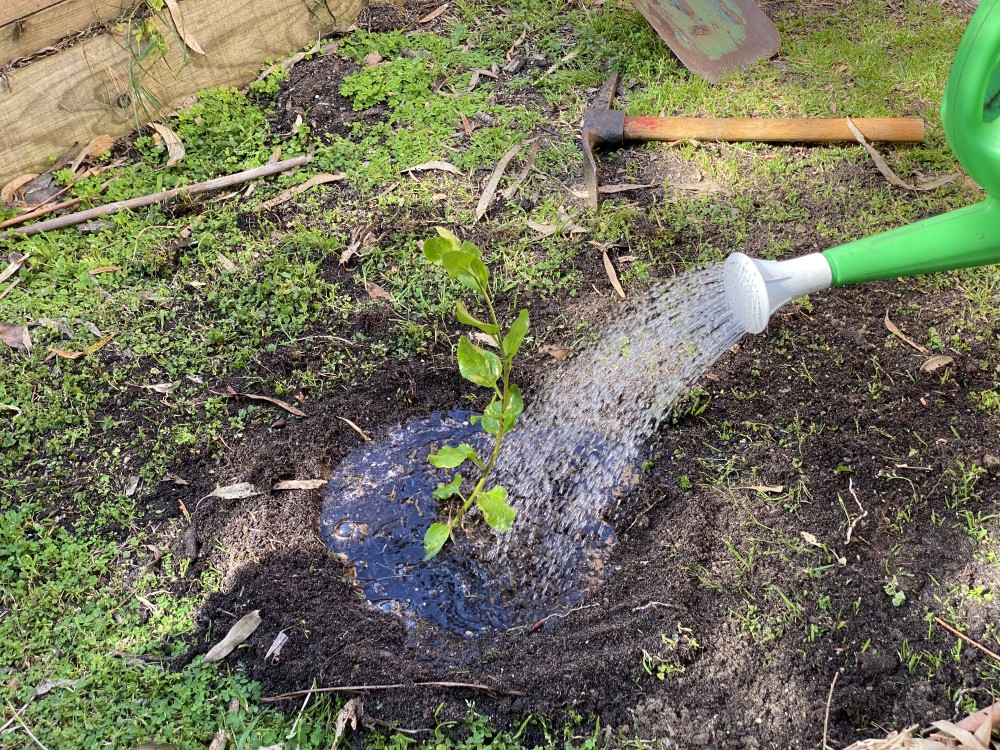

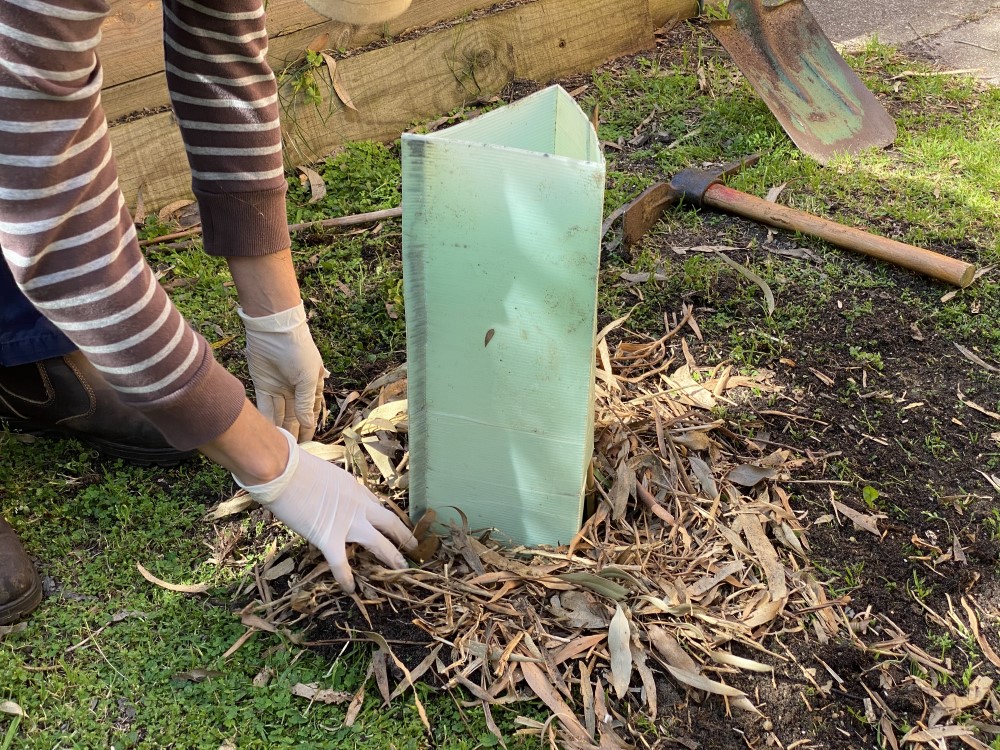
Staking and guarding

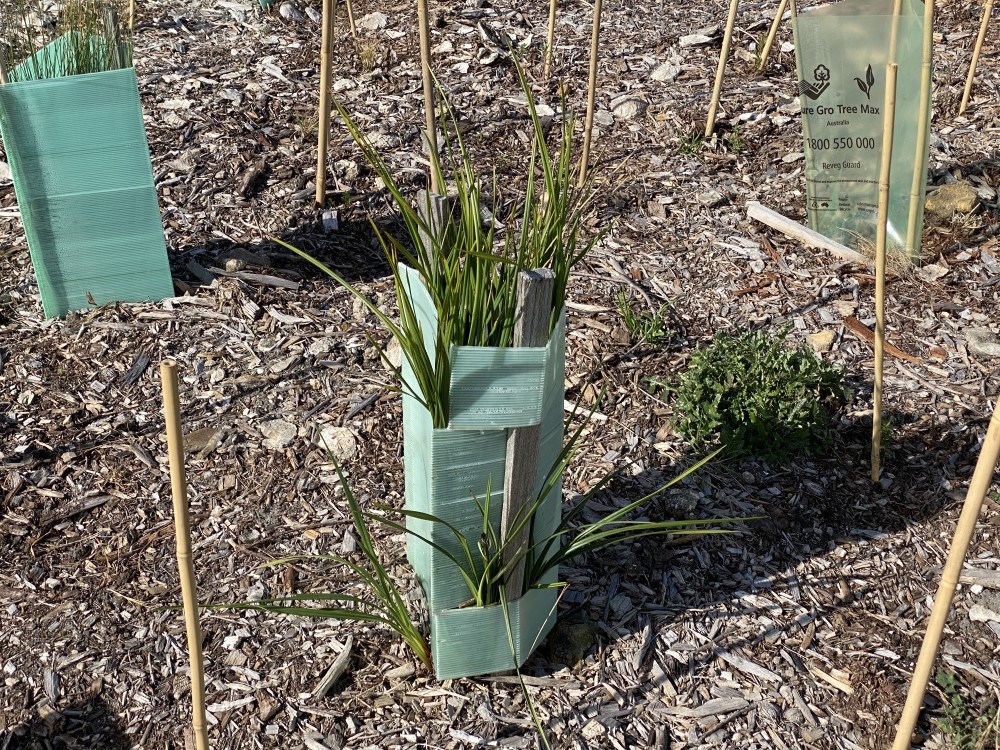
Maintenance
Keep a check on the guard to ensure that strong winds haven’t blown it over the plant and is stopping it from receiving sunlight and rainwater.
The plant in this photo has outgrown its guard, which should have been removed. You might also give your young plant a water if there is a period of dry weather after planting. And don’t forget to remove any weeds.

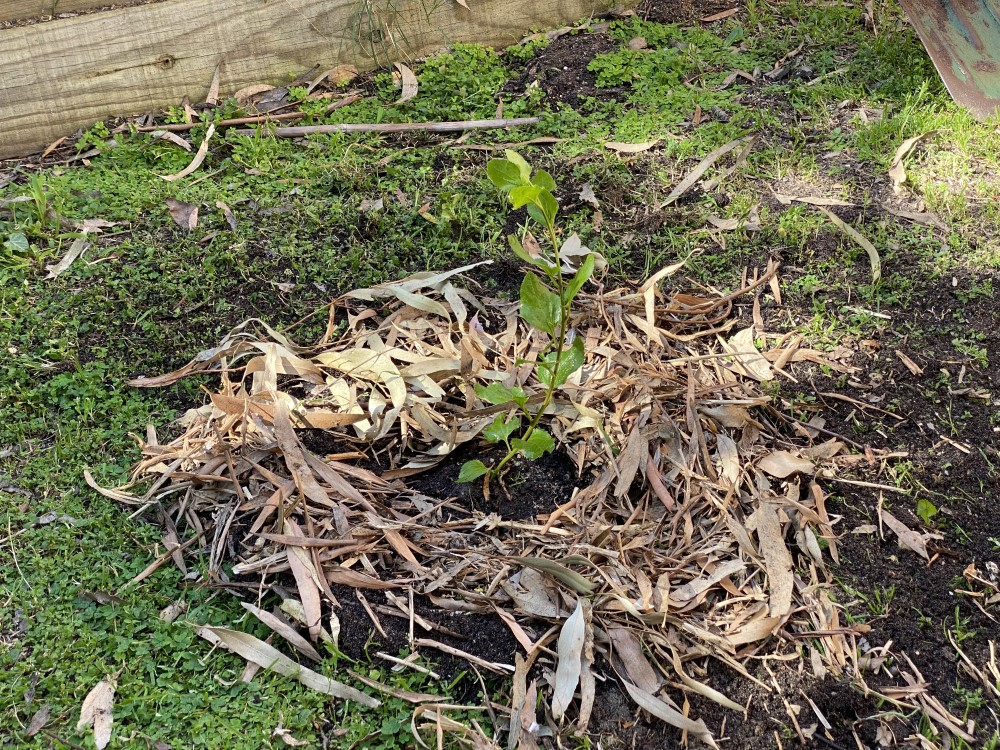
Enjoy your new indigenous plant
Follow your young indigenous plant’s progress. Plants and gardening are great stress relievers.
Indigenous plants also attract native birds and other animals to your garden. Enjoy.
